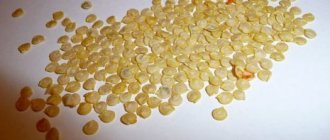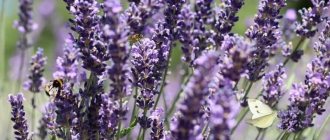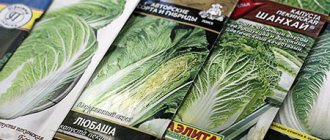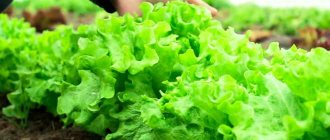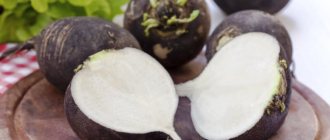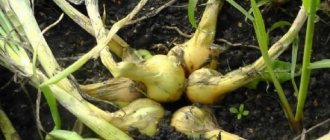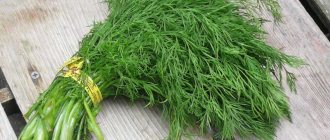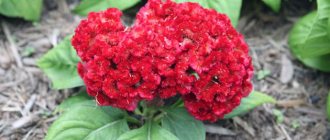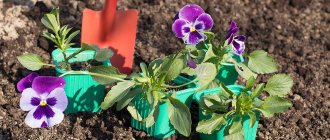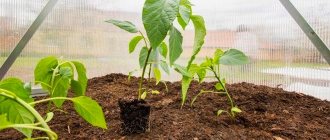Onion is not a frequent visitor to my beds, but I think it’s worth talking about. I think that few people plant it, although it will be useful to gain knowledge of how to grow onion . Moreover, it is worth planting this type of onion, if only because of its taste and ease of agricultural technology. In principle, when visually compared, it is similar to ordinary green and onions, but it still has several differences. It does not form a bulb like an onion, and the greens are coarser than those of the same multi-lobed Magpie onion. But there is a similarity that turns into an advantage. Batun onion easily tolerates low and high temperatures, like many types of onion varieties. In this article I will tell you in detail how to plant correctly, about growing and caring for the onion species. So, let's begin …
Where do the roots of onion come from?
Despite the fact that batun onions are rarely grown, they are popular among true connoisseurs of green onions. It is quite possible that you have heard some gardeners talk about Chinese onions and red onions. So we are talking about the same onion - the batun. In common people it is called that because of its origin story. Onion has been grown for many centuries in the Asian territory of China and Japan. In the same territory, including the territory of Siberia, one can still observe wild plantings of batun, which reproduced on the principle of self-seeding. The fact is that this type of onion is rightfully considered perennial. If you constantly look after the onion, it gives good yields. If abandoned, it will reproduce on its own and begin to run wild. Which will lead to a significant reduction in yield and loss of presentation.
Unlike amateur gardeners, growing batun onions is popular among farmers. They grow it in greenhouses for further sale. So to speak - for commercial purposes. Baton onions hardly form a bulb and when grown for sale as green onions, the barely defined bulb gives extra weight. The batun onion bulb itself is more like a set and tolerates severe frosts in the ground. But the surface green part favorably tolerates only light frosts. The growing season of onion begins in very early spring, as soon as the temperature begins to rise just above zero.
Plant characteristics
Onion is a perennial plant. It grows wild in Southeast Asia, Siberia, and Japan. It is also called “angelica”, “Tatarka” or Chinese onion. A distinctive feature of this plant is the absence of a large bulb. Onion fruits are oblong, not sharp, slightly thickened at the end.
Onions are grown for their greenery. The feathers of this onion, unlike onions, are thicker and hollow inside. They can reach a diameter of 2.5 cm. If they are not cut, they grow up to 1 m. The variety is popular due to its delicate mild taste and lack of a strong odor, which is why it is called odorless garlic.
Onions are just as healthy as onions. It contains many vitamins, minerals, amino acids, and saturated fatty acids. Just 150 g of greens contain the daily requirement of vitamins C and A. Spring onions have a higher nutritional value than regular onions.
In addition to its valuable nutritional qualities, this plant attracts gardeners with its ease of cultivation. Its distinctive features are the following properties:
- grows in one place for 8-10 years, although already 4 years after planting it becomes smaller and thickens;
- if feathers are not collected in time, they become stiff;
- already in the second year, each bush throws out 1-2 peduncles, on which small seeds appear;
- grows well in any soil, but does not tolerate either a lack of water or its excess;
- It is best to grow onions in partial shade, because... in the bright sun the leaves will dry out and arrows will form faster;
- tolerates light frosts well.
Growing onion
Growing onion can be done in several ways. Like many varieties of onions, it can be grown by sowing seeds in open ground and through seedlings. Seedlings are sown in a greenhouse in early January. If the goal is to get an early harvest, then growing batun is definitely worth doing through seedlings. But if there is no rush in time or there are no conditions for growing seedlings, it is sown with seeds. Onion seeds should be sown in open ground as soon as the weather and soil structure make it possible to carry out planting work. If onions are planted by seeds, the maximum harvest will occur only after a couple of years.
Botanical features, comparison with onions
With its aerial part, the batun is very similar to an onion: it has tubular feathers, and in the second year an arrow with a spherical inflorescence is also thrown out. Differences from onions:
- the batun grows as a more powerful and tall bush;
- may consist of several stems, each with 4–6 feathers;
- There is practically no bulb, it is undeveloped and thin. Every autumn, leaves and roots die off, and new ones grow in the spring.
Most domestic varieties tolerate winter and spring frosts down to –9 ⁰C. The feather grows in early spring, at the same time as the greens of sorrel and winter garlic.
The batun has a reduced bulb, that is, small, undeveloped
The main advantage of batun is that it is a perennial and very productive crop. Having sowed once, you can cut the greens 2-3 times during the warm season for 3-4 years. It is possible longer, but from the second year the yield drops. Although sowing and growing again is not a problem, the batun reproduces well by dividing the bush and seeds, even by self-sowing.
Preparing onion seeds for planting
Preparing onion seeds for planting is quite a tedious task. I recommend sowing them immediately in open ground and watering the onions as needed. Just soak in advance for half an hour in warm water with the addition of potassium permanganate. The potassium permanganate solution should be light pink. Thanks to this action, the seeds will go through the disinfection stage. Why do I recommend planting onions this way? The fact is that any onion seeds take a very long time to germinate. Sometimes this process takes a whole month. And the most you lose is an extra week. You can speed up seed germination by just one week if you resort to tedious preparation.
But if you need to speed up the germination of the “chernushka” batun, then get ready to tinker. During the preparation process you will have to observe time intervals. First, as I already said, the seeds are soaked for half an hour in warm water with potassium permanganate. After this, all seeds need to be washed clean. filtered water or the water should settle in advance. Next we resort to the old proven method for soaking seeds - gauze. The gauze is folded into at least five layers and the batun seeds are wrapped in it. Gauze with onion seeds is placed in a container with warm water at room temperature, but not more than 30 degrees. The whole process lasts a day. Three times a day, at the same time interval, the water is changed. This must be done. After a day, the water is drained, the gauze is wrung out and the seeds need to be dried thoroughly. The onion seeds should regain their original crumbly appearance. Only after this procedure can you sow the seeds in open ground and they will germinate a week earlier.
Photo: Growing onion from seeds in open ground
Care
Useful information that may be useful to you:
- in autumn-winter use phytolamps for better yield;
- ideal temperature range: 18–23°C;
- this type of greenery does not like drafts;
- Watering should be moderate and constant. Overmoistening will lead to waterlogging of the soil and plant diseases, insufficient moisture will lead to low yields and a decrease in the taste of greens;
- Fertilize with vermicompost regularly (at least once a month);
- against pests, use folk remedies (tobacco, ash, etc.).
In general, caring for a plant is easy even for children, so involve them in this useful work. Under your control, of course.
How to grow onion seedlings
To obtain an early harvest of onion, it is planted through seedlings. Seedlings are planted in early January in a greenhouse and harvesting can begin in July. By resorting to such agricultural technology, the trumpet plant is not considered a perennial plant and the crop is harvested completely with the bulb. Just as they do when growing green onions from seeds. Before sowing seeds for seedlings, you need to prepare the substrate. In principle, its composition is no different from that required for growing seedlings of other crops. To do this, you need to use: 50% ordinary soil, 30% humus or compost, 10% rotted sawdust or hydroperlite, 10% sand. There is no point in adding any chemical fertilizers. Firstly, all the essential nutrients are found in humus or compost. Secondly, when growing seedlings, onions use seed reserves and practically do not use fertilizing from the substrate.
After the substrate is prepared, you need to sow the seeds of the batun. Pre-prepare the seeds using one of the methods described above. The container in which the onion seedlings will be grown must have holes at the bottom to quickly remove excess water after watering. I recommend growing seedlings not in cups and pots, but in long tubs. Pre-prepared soil is poured into the container and watered. After a couple of hours, when the soil has gained moisture and excess water has drained, make grooves with a pencil. The depth of the grooves should be no more than three centimeters. Onion seeds are sown in furrows and sprinkled with humus or sawdust. After the seeds are sown and covered, the grooves are lightly compacted. This is done for better contact of seeds with moist soil.
Growing onion seedlings
Growing onion seedlings should take place at a temperature of +6 - +12. Too high a temperature is harmful. At high temperatures, the seeds will germinate faster, and the seedlings will also grow faster, but the quality will be unsatisfactory. In order not to resort to additional illumination of seedlings and further hardening, seedlings should grow at a temperature no higher than +12. Then exactly by April, it will be powerful and will quickly take root after transplanting into open ground. Under certain conditions, the container must stand for the entire time. As soon as the seeds germinate and straighten to the appearance of “needles,” it is necessary to thin out the grooves, leaving a distance of 1-2 cm between the “needles.” There is no need to water often, only as needed.
Useful video about onion, watch until the end!
Onion seedlings are planted in April, when the weather and soil allow for the cultivation of a vegetable garden. The distance between seedlings is 10-15 cm, the row spacing is 40-50 cm. You can use two-line planting of seedlings. After planting the seedlings, the beds are thoroughly watered. A few days after planting, the seedlings will take root and straighten up. so there is no need to worry if, a couple of hours after planting, all the seedlings die. This is a common occurrence.
Harvest and storage
The first harvest is cut 30 days after entry. 45 days after planting, the final harvest of succulent greenery is carried out.
Green feathers are torn off by hand or cut with a sharp knife at a distance of 5 cm from the ground. The onion is not pulled out. The greens are placed in boxes or wrapped in plastic and stored in a cool place.
Onions can be frozen and stored in the freezer for up to a year. Greens can stay in the vegetable compartment of the refrigerator for up to 30 days.
Juicy feathers are suitable for drying in the oven, electric dryer and outdoors. Dry raw materials are stored in paper bags or glass containers for up to a year.
Preparing a site for planting onions
Some gardeners are wrong to consider this culture capricious. Batun gives good results, provided that the preparation of the area for planting batun onions is done correctly. For fruitful cultivation, fertile soil containing balanced nutrients is necessary. It is also worth noting that this plant reacts poorly to acidic soils. Before planting onion, you need to add lime or dolomite flour to the soil. Nitrogen, magnesium, phosphorus and potassium are added to the soil as nutrients. After all components are added to the soil, the soil is dug up or milled.
In the process of preparing the soil for onion, which is planned to be grown for several years in a row, special attention is paid to soil aeration. The soil in open ground should be well structured and crumbly. This quality of the substrate prevents the soil from becoming waterlogged during the process of watering the batun - which he loves so much. A crumbly soil structure can be achieved by adding horse manure or rotted softwood sawdust. Remember one rule - “the onion loves the chopper.” In the process of growing onions, the beds must constantly be loosened. Loosening the soil is done every two to three waterings.
Despite the fact that the soil has been properly prepared, during the growing season the onion takes nutrients from the soil and must be fed with nitrogen and potassium fertilizers. In winter, onions must be sent fertilized. To do this, manure and phosphorus fertilizers are applied between the rows, after which everything is dug up. Either manure or phosphorus fertilizers will release nutrients into the soil over the winter and in the spring the onion will receive high-quality nutrition.
Photo: Onion from seeds
Culture transplantation
The need to replant onions may arise for various reasons, for example, in order to free up land for planting another crop or for other needs. The operation is carried out in early spring, although some gardeners perform it in August or early September. To replant, you need to select a suitable area, prepare holes, carefully dig up the best plants and move them to a new location. Planting of the crop should be done at the same level, i.e., without deepening or elevation. When the procedure is completed, it is necessary to moisten the soil.
Video: how to transplant onions
When cultivating spring onions, it is important to properly prepare the seeds and soil, as well as sow in accordance with the recommendations. In order for plants to grow and develop well, it is necessary to provide appropriate care, which will make it possible to receive fresh greens throughout the season.
- Author: Vladimir Dolzhenkov
Rate this article:
- 5
- 4
- 3
- 2
- 1
(0 votes, average: 0 out of 5)
Share with your friends!
Planting onion seeds
It is worth noting that planting batun onion seeds is universal in terms of sowing time. The only exception is winter. And so, batun seeds can be sown at any time of the year and in any month. Of course, if you are sure that you can, for example in July, during intense heat, provide the planting with constant watering. If not, then the seeds simply will not hatch and will steam under the crust of the soil. The optimal and simpler time for planting onion seeds is traditionally spring or autumn. In both the first and second options, the soil is saturated with moisture and the seeds germinate well and quickly.
Planting of onion seeds is carried out in shallow grooves, like any onion seeds that are grown for feathers. Typically, the depth of the furrow is 1.5-3 cm. Before planting batun seeds, if you do not use precision seeders and plan to sow manually, I recommend mixing the seeds with sand 1:1. This will allow the seeds to be sown more evenly and less densely. Upon completion of sowing, I advise you to sprinkle the seeds with peat, humus or sawdust. Then water generously. After thorough watering, the upper substrate will be saturated with moisture, the onion seeds will quickly hatch and sprout.
The width of the beds should not be ignored. It should be at least 35 cm, which will allow you to easily care for the trampoline and there will be sufficient row spacing that can be dug up in the winter. Next, when the seeds have sprouted and the formation of the first true leaves has begun, the beds are thinned. A distance of 3-5 cm is left between each plant. While the onion is gaining strength, it requires care in the form of constant watering. If the seeds were planted towards the end of spring, watering is done in the morning and evening daily. But! — waterlogging of the soil is not allowed.
Description of the crop and choice of variety for open ground
Onion is a perennial plant from the Onion family. The birthplace of culture is the territory of Asia. It grows wild in Mongolia and China. In Russia, batun is cultivated almost everywhere, with the exception of the Far North. Caring for it is not particularly difficult.
The above-ground part is similar to onions - the stems are long, tubular, but denser. The underground part is represented by a false, short, bleached stem and lacks a rounded turnip.
Onions are grown for their greenery. The plant spends all its energy on the formation of tubular leaves. If they are not cut in time, they can reach 60-70 cm in height and 20-25 mm in diameter. The maximum wall thickness is 1.5 mm. Such a feather is considered overgrown and unsuitable for consumption due to excessive hardness and lack of taste.
The false bulb, or stem, is also eaten. The bulk of the roots are located at a depth of 30 cm.
In Russia, due to climatic conditions, early or mid-early varieties of onion are grown:
- Aprilsky is an early ripening variety. The harvest is harvested in April. It is resistant to most onion diseases. The taste is pleasant, sweet and spicy.
- Russian winter is a mid-early variety, resistant to frost. The leaves are bright green in color, up to 35 cm high. The taste is delicate and sweet.
- Baia Verde is a mid-early variety. The leaves are green in color, up to 40 cm high. The taste is pungent. The aroma is pronounced onion.
- Giant is a mid-early variety with high resistance to frost. The leaves are thick, fleshy, up to 50 cm high. The taste is spicy-sweet.
- Seryozha is an early variety with high resistance to frost. The leaves are bluish-green, up to 55 cm high, with a pleasant, sweet taste without pungency.
- Gulden is a mid-early variety. The leaves are juicy, tender, low-growing, up to 40 cm in length. The taste is medium hot.
- Damast is an early ripening variety. The feathers are green, erect, covered with a waxy coating. Stem height - 30 cm, diameter - 11 mm. The taste is pleasant, sweet.
- Zelenets is an ultra-early variety. Feathers up to 80 cm in length, bright green. The taste is sweetish, semi-sharp.
- Kaigaro is a mid-season variety. The leaves are erect, bluish-green, up to 50 cm in height. The taste is delicate, sweetish, semi-sharp.
- Red is an ultra-early variety with the possibility of harvesting a month after planting. The feathers are tall, up to 70 cm in length, green in color. The taste is pleasant, medium-sharp, sweetish.
- Emerald is an early variety. The feathers are dark green in color, with a waxy coating, 70-85 cm long. The taste is delicate and sweet.
- Tenderness is an ultra-early variety, ripens 30 days after sowing. The feathers are green, with a slight waxy coating, up to 35 cm high. The taste is sweet, semi-sharp.
The photo shows a spring onion.
Diseases and pests when growing onions
Batun, like other types of onions, is susceptible to disease or pest attacks. Do not neglect the rules of agricultural technology during the growing season. The beds must be kept free of weeds at all times. Monitor soil aeration, constantly loosen the top crust and avoid waterlogging when watering. And in general, always properly water onions in open ground. If you start planting, they will definitely be hit. The main and common enemies are: among diseases - fungal infections; One of the pests is the onion fly. To prevent fungal diseases, the beds are periodically watered with the drug phytosporin. It also helps get rid of onion fly larvae. How to deal with this pest, you can read the article about the onion fly.
Harvesting onion
Well, I’ve reached the most pleasant moment - harvesting the onion harvest. The onion grows on average for half a year. If it was planted in early spring, then in mid-autumn you can harvest the batun. But if the onion was planted at the beginning of summer, then the harvest can only be harvested next spring. Therefore, before planting onions, think about the harvest date.
Harvesting consists of cutting off the young leaves of the batun. As a rule, leaves are cut from bottom to top using a well-sharpened tool. The cut must be made at the base of the leaf without damaging the stem. To ensure that the onion leaves are elastic and juicy, the onions are watered in the evening before harvesting. overnight, all the leaves will gain moisture at a lower night temperature and will become “fleshy.”
So I shared with you how to grow onion from seeds in open ground , how to care for it and reap a good harvest. I hope the note was useful to you, write comments and share on social networks. Happy onion harvest everyone!
Agricultural technology
Caring for onion plantings will not take much time, since this plant is unpretentious. However, so that the greens do not turn yellow, but are juicy, during the season the trumpet needs to be watered and fed, the soil must be loosened and freed from weeds.
Water the onions as the soil dries. On hot days, you may need to moisten the soil daily or even twice a day. After watering, the soil should be moist to a depth of 20 cm. In warm weather with regular precipitation, water the onions one to three times a week. It all depends on the frequency of rain and air temperature. Due to lack of moisture, the baton can go into the arrow.
After rain or watering, weeding is carried out and the rows are loosened. During the season, the loosening procedure should be carried out at least five times. If the bushes have grown greatly and the feathers have begun to fall over, hilling is carried out.
You will be interested to know: How to feed onions to make them large: folk remedies and fertilizers
Fertilizing onions:
- A month after the seedlings appear, the plants are fed with fertilizers containing nitrogen and phosphorus. This can be Azofoska or Nitrophoska, 10 g of which are added per 1 sq. m beds.
- At the beginning of autumn, a month before stable frosts, plants are fed with potassium fertilizers (10 g per 1 sq. m). This feeding will prepare the plant for the cold and help it survive the cold winter more easily.
- In early spring, nitrogen-containing fertilizers are applied to the onion bed to increase green mass. This can be humus or ready-made mineral fertilizer.
In early spring, to prevent the appearance of pests and diseases, plantings are treated with an infusion of tomato tops or onion peels.
He loves onions and onion flies very much. You can get rid of them by spraying plants with liquid Green soap or pollinating with wood ash.
If the plants are affected by the moth, they are sprayed with a highly concentrated infusion of mustard powder.
Unfortunately, it is not always possible to defeat pests and diseases using folk remedies. In this case, use special preparations – insecticides – to kill insects, and fungicides to fight diseases.
